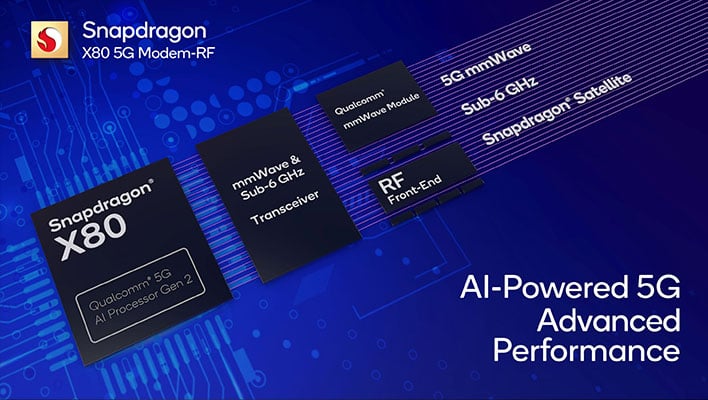Qualcomm made a splash at this year’s Mobile World Congress (MWC) in Barcelona, Spain, with a number of announcements, one of which was the launch of the Snapdragon X80 5G modem-RF system. Qualcomm is leveraging the power of artificial intelligence to position its latest generation of modems as the most advanced modem-to-antenna platforms yet, with some spectrum flexibility.

But that’s okay, because the Snapdragon X80 5G is transformative in other ways, too, with groundbreaking updates and key new features. It is worth noting that Qualcomm highlighted some industry first milestones achieved by its X80 system – it is the first 5G modem to fully integrate support for NB-NTN satellite communications, the first to support 6 receiving antennas on a smartphone, and the The first 5G modem system features 6X carrier aggregation.

Like the Snapdragon X75 5G, the Snapdragon X80 5G has a peak download speed of 10Gbps and a maximum upload speed of 3.5Gbps. It also supports all global 5G frequency bands from 0.6 to 41GHz and is further optimized with Qualcomm’s 5G AI Suite Gen 3 to intelligently enhance data speeds and QoS scenarios.
Snapdragon X80 also leverages AI-based mmWave range extension to extend fixed wireless access customer premises equipment (CPE). This is important because millimeter wave utilizes higher-frequency radio bands to deliver speeds closer to the full potential of 5G, but it is a shorter-range solution that can be affected by obstructions and degrade quickly. Any time a company like Qualcomm can launch a solution that extends millimeter wave range, it’s a very good thing.

Durga Malladi, senior vice president and general manager of technology planning and edge solutions at Qualcomm Technologies, Inc., said: “Snapdragon X80 modem-RF systems lay the foundation for 5G Advanced and the era of ubiquitous intelligent computing. Leveraging artificial intelligence is critical for The future of connectivity, this latest milestone highlights Qualcomm Technologies’ leadership at the intersection of cutting-edge artificial intelligence and advanced modem RF technology. The Snapdragon X80 5G Modem RF System enables OEMs and operators to build next-generation 5G Advanced-enabled devices with unparalleled capabilities and leading performance.”